



This information will guide you through the next 6 weeks of your rehabilitation. Use the information below to gain a better understanding of your injury and what can be done to maximise your recovery.
| Healing: | Depending on the severity soft tissue knee injuries can take between 6-12 weeks to heal. |
| Pain and Swelling: |
Your knee may be swollen. Resting and elevating your leg will help. Take pain killers as prescribed. |
|
Using your leg:
|
You will need to adjust your activity level until you movement returns and your pain has resolved. You may walk on your leg as comfort allows and may use crutches and/or a splint if provided by A&E. |
|
Follow up:
|
During your telephone call with the Fracture Care team, it was decided that you are able to self-manage this injury using the advice below. Your case will be kept open for approximately 6 weeks. If we do not hear from you in that time we will assume you are managing well and do not need further assistance. If, within 6 weeks, you are still struggling, please contact the Virtual Fracture Clinic team. You may be referred to a physiotherapist or a knee specialist. |
If you are worried that you are unable to follow this rehabilitation plan, or have any questions, then please phone the Fracture Care Team for advice.
Or, if you are experiencing pain or symptoms, other than at the site of the original injury or surrounding area, please get in touch using the telephone or e-mail details at the top of this letter.
What to expect
|
Weeks since injury |
Rehabilitation plan |
|
0-3 |
|
|
3 |
If, after 3 weeks, you are struggling with any of the following please contact the Virtual Fracture Clinic to arrange an appointment in Acute Knee Clinic:
|
Advice for a new injury
Cold packs: A cold pack (ice pack or frozen peas wrapped in a damp towel) can provide short term pain relief. Apply this to the sore area for up to 15 minutes, every few hours ensuring the ice is never in direct contact with the skin.
Rest and Elevation: Try to rest the knee for the first 24-72 hours to allow the early stage of healing to begin. Raise your knee above the level of your hips to reduce swelling. You can use pillows or a stool to keep your foot up
Early movement and exercise: Early movement of the ankle and foot is important to promote circulation and reduce the risk of developing a DVT (blood clot). Follow the exercises below within the limits of your pain. These exercises will help the healing process.
Early weight bearing (putting weight through your injured leg) helps increase the speed of healing. Try to walk as normally as possible as this will help with your recovery.
Fitting the cricket pad splint
Place the cricket pad splint on the leg so that your patella (knee cap) is in the middle of the hole in the splint, as shown.

Exercises
Initial exercises to do 3 times a day
Static Quads
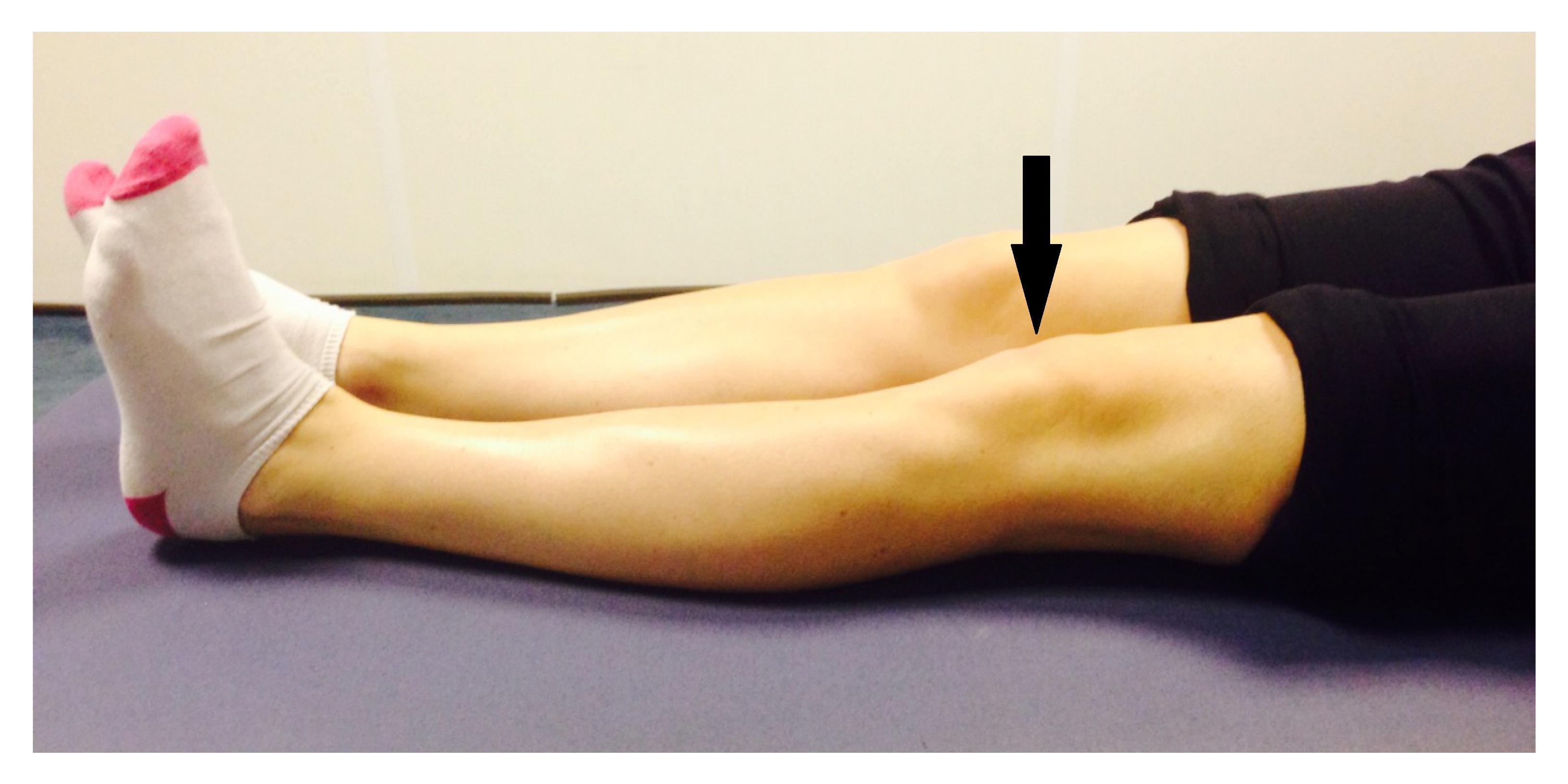 With the leg straight and supported, gently tense your thigh muscle and try to straighten your knee further. Hold for 10 seconds and repeat 7-10 times.
With the leg straight and supported, gently tense your thigh muscle and try to straighten your knee further. Hold for 10 seconds and repeat 7-10 times.
Knee flexion and extension
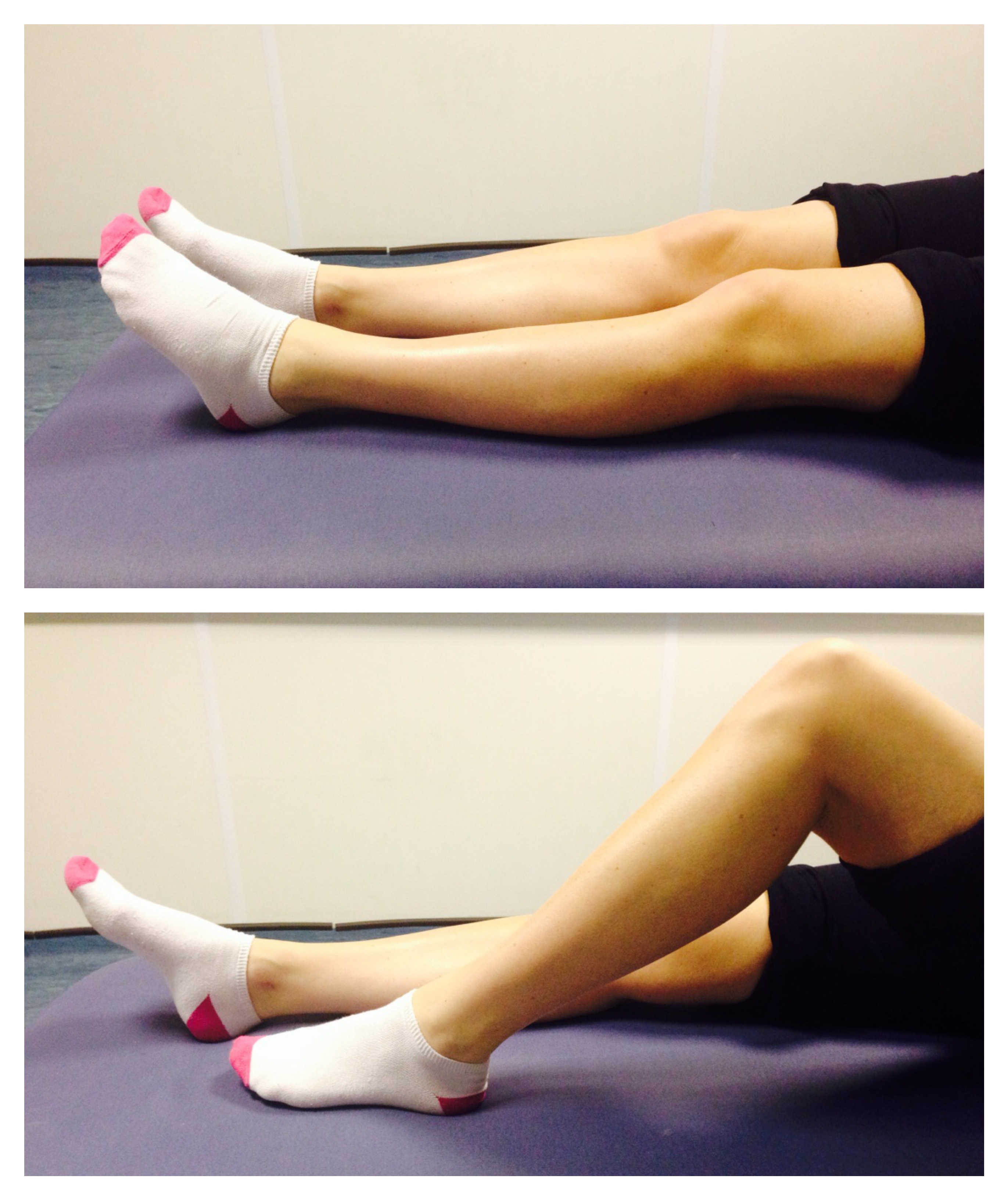
Bend and straighten your injured leg as far as you feel comfortable. Repeat 7-10 times
Progression exercises
When you can do the 2 exercises above, you can start these exercises:
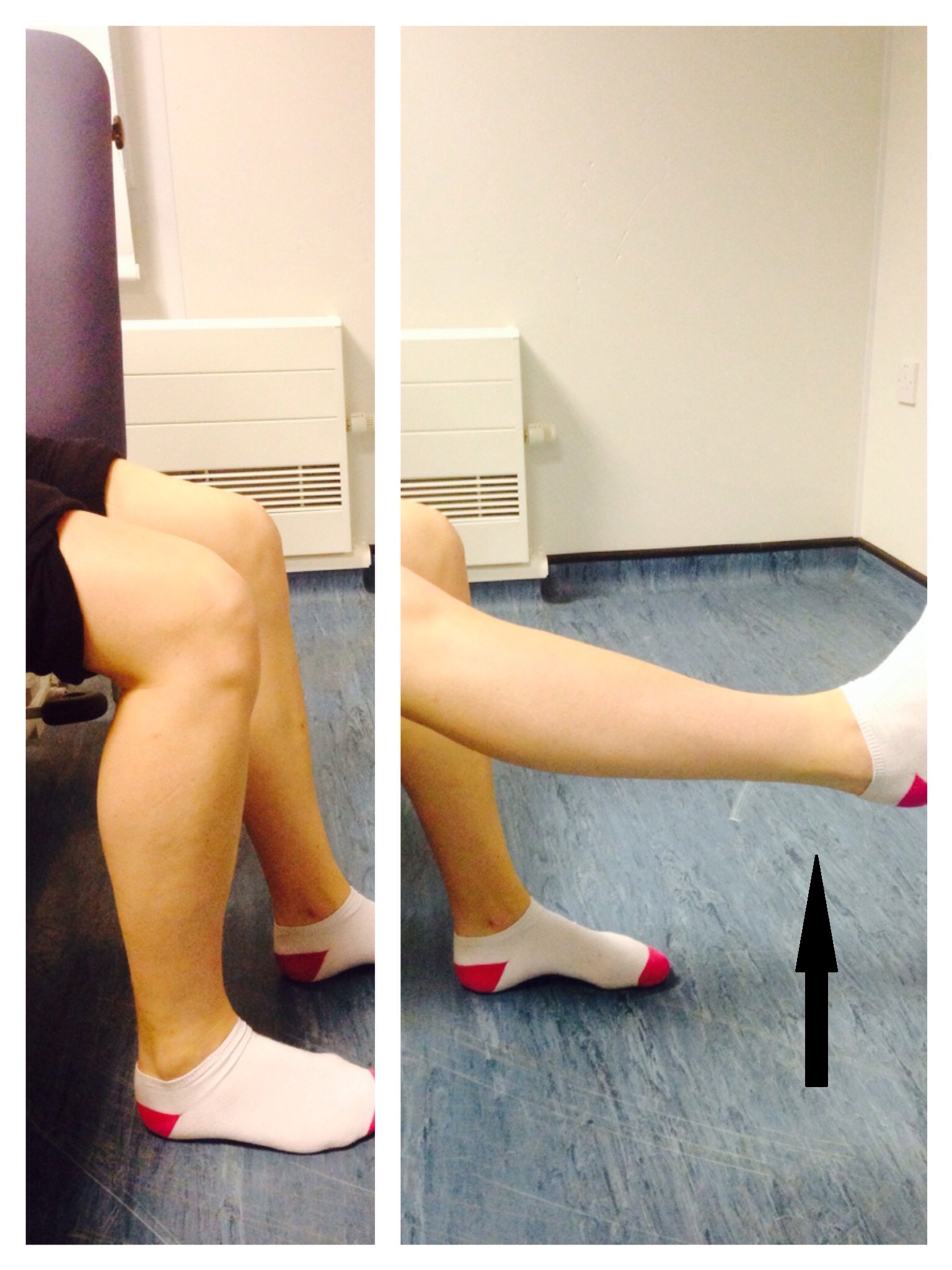
Bend and straighten your knee while sitting, as comfort allows. Repeat 10 times.
If able, hold your leg straight for up to 5 seconds.
Advanced weight bearing exercises
You can begin these exercises once your movement has returned and pain is at a minimum:
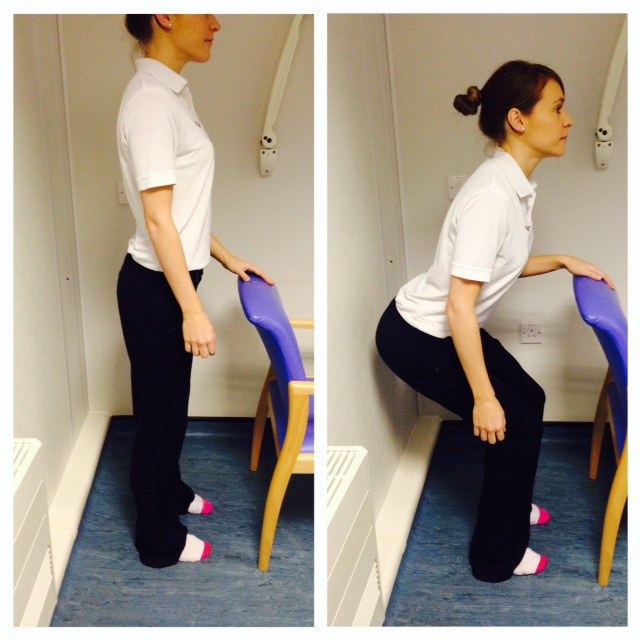
Using the back of a chair/table for support, bend both knees into a squat position no further than a seated position and then stand up again.
Repeat 5-10 times.
Progression Exercise
Only do these exercises when you can do the exercises above pain free AND if you could have done this before your injury.
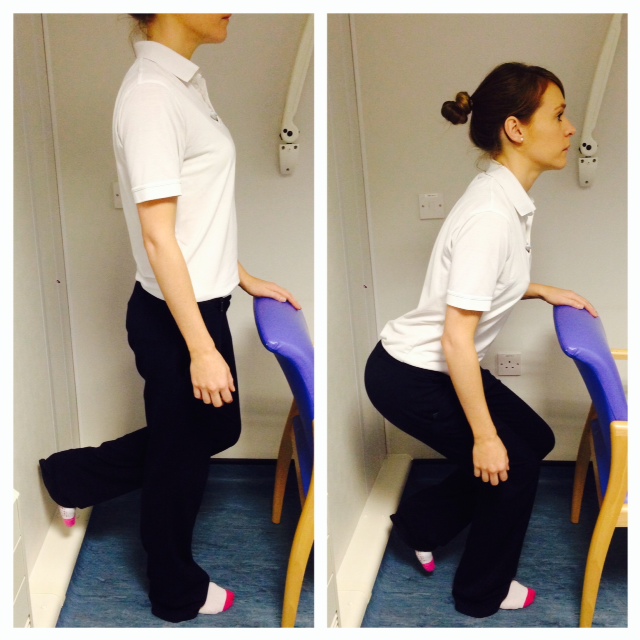
Using the back of a chair/table for support, bend both knees into a squat position no further than a seated position and then stand up again.
Repeat 5-10 times.